Whether you’re a beach lover, an adventurer, or fascinated by exotic cultures, Asia offers incredible summer holiday destinations.
And one of the most thrilling parts of traveling in Asia is sampling the wide variety of unique and delicious fruits.
As you wander through local markets, big or small, day or night, you’ll encounter fascinating fruits you haven’t seen before.
Here’s our list of the top 5 must-try exotic fruits of Asia, along with their Chinese names!
Durian 榴蓮/榴莲
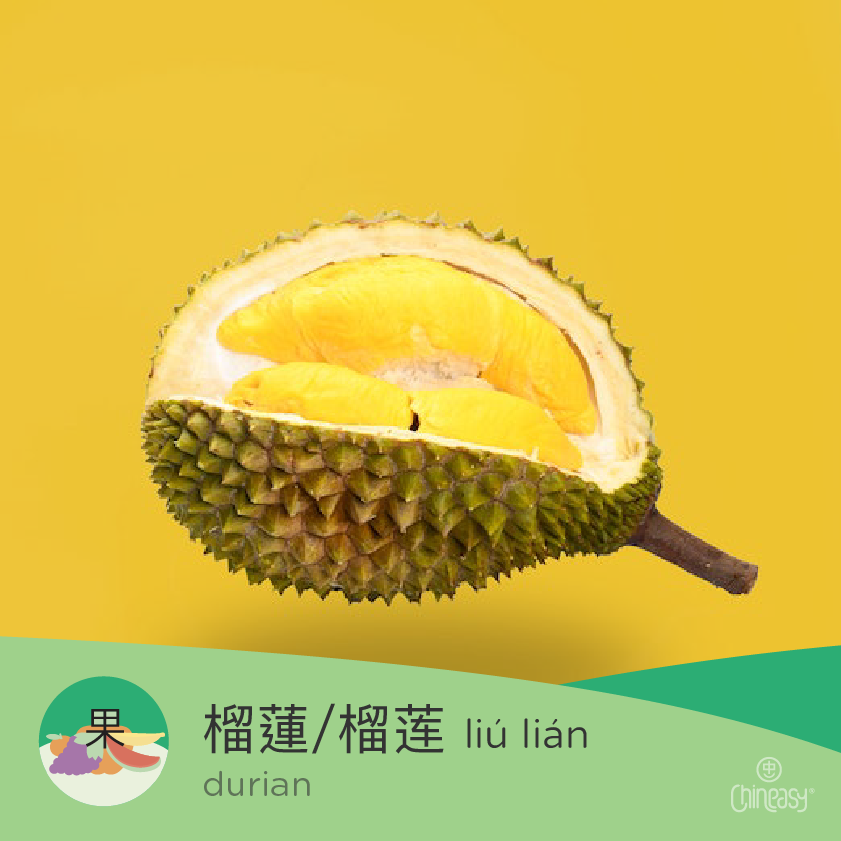
Photo by Pesce Huang on Unsplash
Our journey begins in Thailand (泰國/泰国; tài guó), which is renowned for its famous durian. The Chinese word for durian is 榴蓮/榴莲 (liú lián).
榴蓮/榴莲 , often called the “King of Fruits,” is not only popular in Thailand but also grown in other Southeast Asian countries like Malaysia, Indonesia, and Singapore. Thailand, however, is the world’s leading exporter of this unique fruit.
Durian is easily recognizable by its large, spiky shell. You should only cut the fruit when it’s ripe enough to eat. Since it’s not easy to open, the fruit is usually sold in ready-to-eat packs.
Its distinct smell, which can be polarizing, ranges from sweet to pungent. Some people even compare it to the smell of blue cheese.
Inside, the fruit has a creamy texture, often described as a mix between custard and cream cheese. Despite its strong aroma, durian is beloved for its rich, complex flavor.
In addition to being enjoyed fresh, durian is used in various byproducts, such as ice cream, cookies, cakes, and even candies. Its versatility makes it a staple in many Asian desserts and snacks.
Many travelers find the first bite of durian to be an unforgettable experience, whether they love it or hate it. Its unique characteristics make it a must-try for any adventurous foodie exploring Asia.
Mango 芒果
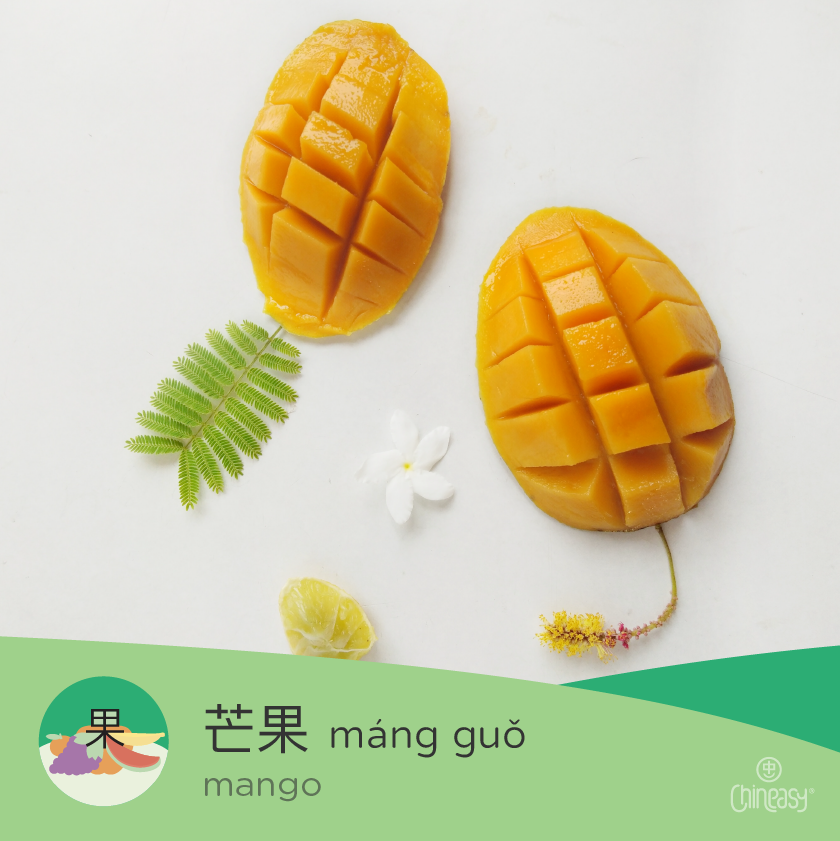
Photo by Avinash Kumar on Unsplash
Next, we explore the beloved mango, known in Chinese as 芒果 (máng guǒ).
Unlike the polarizing durian, mangoes are adored by most people and considered delightful tropical treats. These sweet and juicy fruits are now commonly found in most supermarkets in Western countries, making them a familiar favorite.
But you still should try mangoes if you travel to tropical and subtropical regions, including Taiwan, India, and the Philippines. The mangoes you can try in these countries could be very different from what you usually buy back home, often much sweeter, juicier, and more flavorful.
Especially in India (印度; yìn dù), one of the largest producers of mangoes in the world, there is a diverse range of mango varieties.
In Japan, it’s quite common to give expensive mangoes, such as the renowned Miyazaki Mango, as a gift. This particular type of mango even comes with detailed instructions on how to cut and enjoy it.
Mangoes have smooth, thin skin that ranges in color from green to red to yellow, depending on the variety and ripeness. Inside, the fruit boasts vibrant orange flesh that is both sweet and slightly tart.
In addition to being enjoyed fresh, mangoes are used in various products such as smoothies, salads, desserts, and even savory dishes like the Indian chicken and mango curry dish.
Whether enjoyed fresh or in one of its many forms, the mango is a beloved fruit that captures the essence of tropical indulgence, making it a must-try for anyone exploring the flavors of Asia.
Passion Fruit 百香果
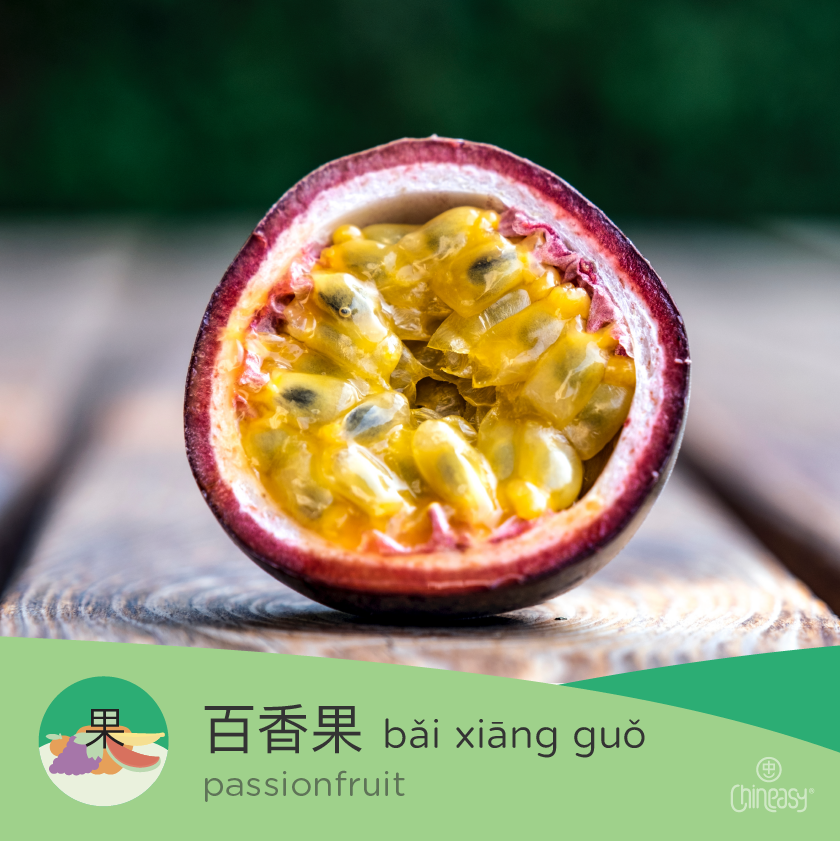
Photo by Michael Kucharski on Unsplash
Our next tropical delight is the passion fruit. Its Chinese term is 百香果 (bǎi xiāng guǒ).
Passion fruit is adored for its unique flavor and aromatic fragrance. This small, round fruit, typically purple or yellow when ripe, is native to South America but is now grown in many tropical and subtropical regions, including Southeast Asia.
The outer rind of the passion fruit is tough and inedible, but inside, you’ll find a treasure trove of jelly-like pulp filled with small, crunchy seeds. The taste is a delightful mix of sweet and tart, often described as a blend of citrus, pineapple, and guava.
Passion fruit is not only delicious but also an excellent source of vitamins C, A, K, and B. These nutrients contribute to its numerous health benefits, including boosting the immune system and improving digestion and skin health.
In many Asian countries, passion fruit is enjoyed fresh, scooped straight from the rind, or added to drinks, desserts, and salads. Its vibrant flavor makes it a popular ingredient in juices, smoothies, and even cocktails.
In Chinese cuisine, passion fruit is added to meat or fish dishes to add exotic flavor that elevates the culinary experience.
Whether you’re savoring it fresh or as part of a dish, passion fruit’s exotic taste and health benefits make it a must-try for anyone exploring the diverse fruits of Asia.
Lychee 荔枝
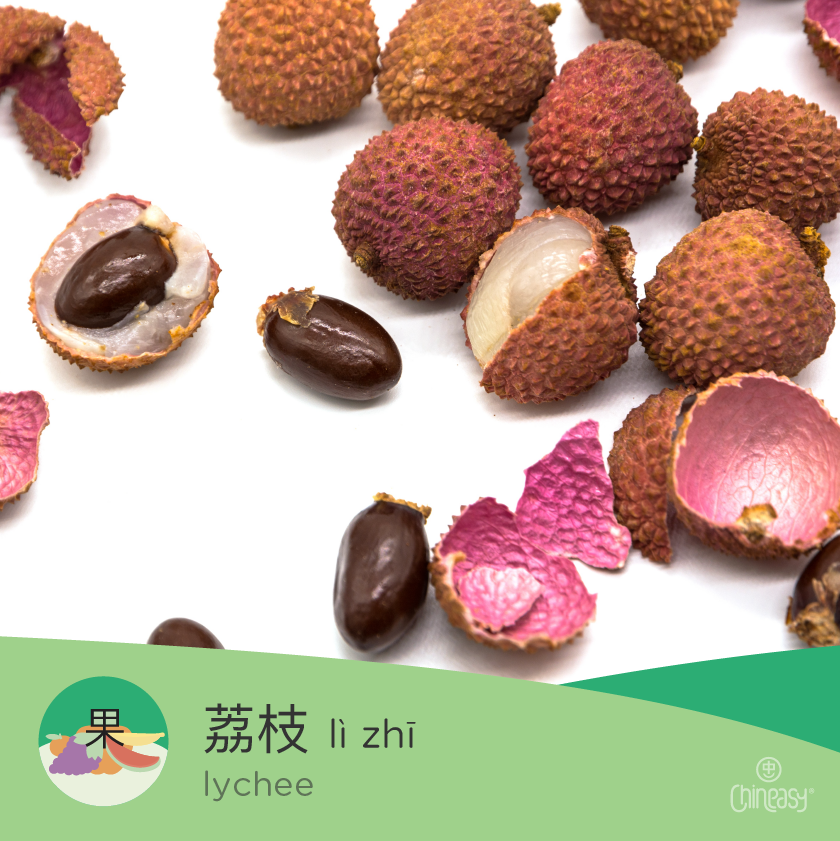
Photo by Bermix Studio on Unsplash
Next, we explore the refreshing lychee, translating to 荔枝 (lì zhī) in Chinese.
Lychee is a beloved fruit in many Asian countries, especially China (中國/中国; zhōng guó), where it has been cultivated for over a thousand years.
In Chinese culture, the fruit is regarded as the fruit of love and life. One famous story from Chinese history involves Yang Guifei (楊貴妃/杨贵妃; yáng guì fēi), the favorite concubine of Emperor Xuanzong of the Tang Dynasty.
Yang Guifei loved lychees (荔枝) so much that the emperor would have fresh lychees delivered to her from the southern regions of China, using a relay of fast horses to ensure they arrived quickly and in perfect condition.
The fresh taste of lychee is often described as sweet and floral, with a hint of tartness. This refreshing flavor is a far cry from the lychees you might find in a can, which, while still tasty, tend to be much sweeter and lack the delicate, nuanced flavor of fresh lychees.
You might wonder how to peel a lychee easily. It is similar to peeling an orange and requires no tools.
Simply pierce the thin red skin with your fingernail, then you’ll be able to quickly peel the skin off to reveal the pale pink fruit inside. The flesh surrounds a large seed in the center that is not edible.
According to Traditional Chinese Medicine (TCM), fresh lychee is considered a “hot” food known to nourish the blood and disperse cold. So, moderate consumption of lychee helps promote Qi circulation in the body.
Whether eaten fresh or used in a dish, the lychee’s exquisite taste and ease of preparation make it a must-try for anyone exploring the flavors of Asia.
Dragon Fruit 火龍果/火龙果
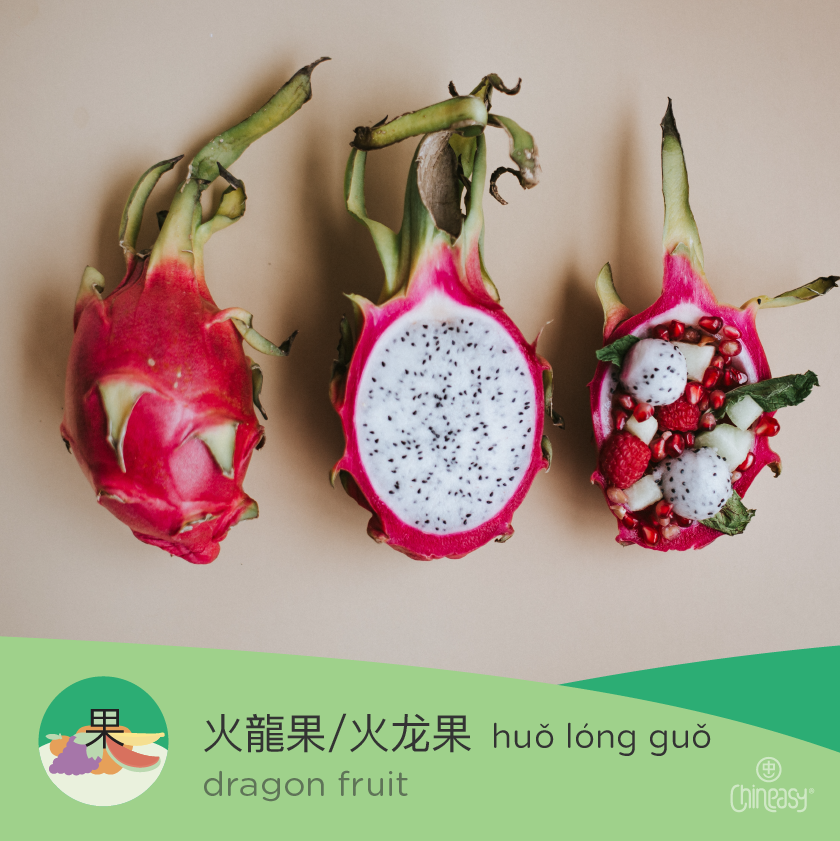
Photo by Heather Ford on Unsplash
Lastly, we arrive at our final destination, Vietnam (越南; yuè nán), which is one of the largest producers of dragon fruit in the Asia-Pacific region.
The Chinese name for dragon fruit, 火龍果/火龙果 (huǒ lóng guǒ), literally translates to “fire dragon fruit.” This name aptly describes its striking appearance, with its vibrant, fiery-colored skin that resembles the scales of a mythical dragon.
Dragon fruit comes in different varieties, each with its unique color combination. The most common type has bright pink skin with white flesh speckled with tiny black seeds.
There are also varieties with yellow skin and white flesh, as well as the more exotic type with pink skin and deep red or magenta flesh. Despite their differences in color, all varieties share a similar mildly sweet taste.
The flesh’s texture is reminiscent of kiwi or pear, making it a delightful and refreshing snack. However, the texture becomes mushy if the fruit is overripe, so it’s best to eat it at the right ripeness.
To enhance its taste, you can pair it with a drizzle of honey. It can be enjoyed fresh or added to fruit salads, smoothies, and desserts. Dragon fruit with deep red or magenta flesh is often used as a coloring agent in desserts.
The fruit is also packed with nutrients. It is a good source of vitamins A and C, fiber, and antioxidants, making it a healthy addition to any diet.
Whether you are drawn to its exotic appearance or its nutritious benefits, dragon fruit is a must-try for anyone exploring the diverse and colorful fruits of Asia.
Here you have it – 5 Chinese words for must-try exotic summer fruits. From the “King of Fruits” durian (榴蓮/榴莲; liú lián) to the exotic dragon fruit (火龍果/火龙果; huǒ lóng guǒ), each of these fruits offers a unique experience.
As you encounter these fruits in your local Asian grocery store or on your next holiday to Asia, try to name them in Chinese. Not only will this enhance your language skills, but it will also deepen your appreciation for these delightful treats!



